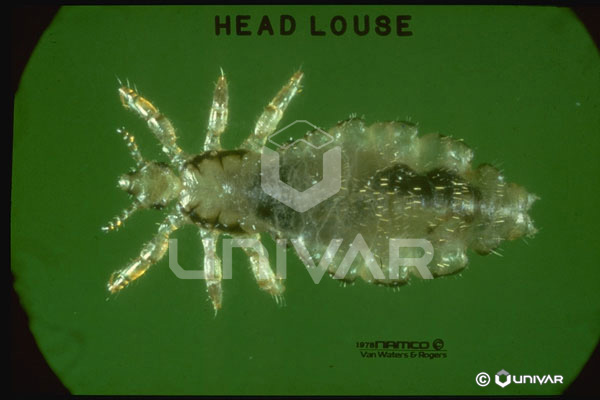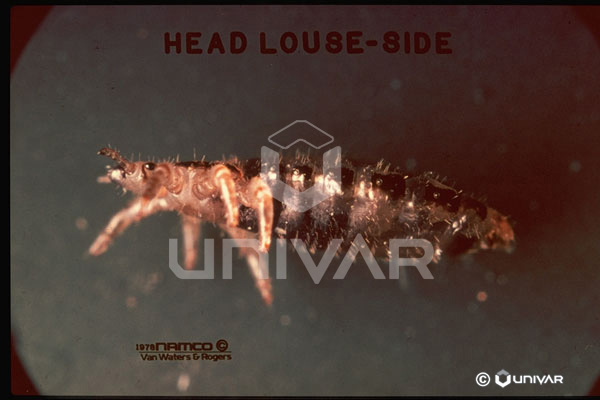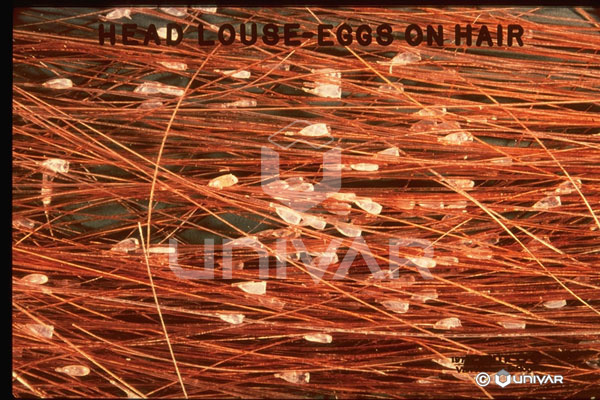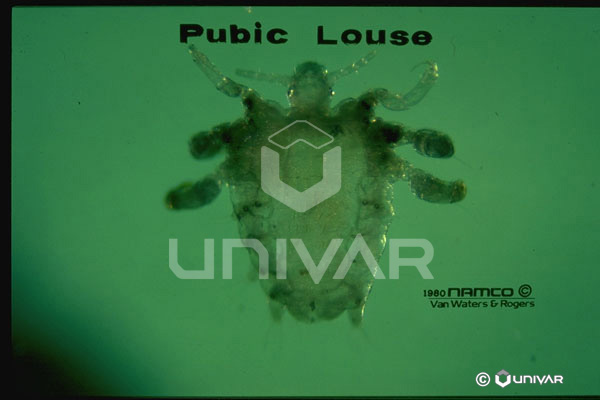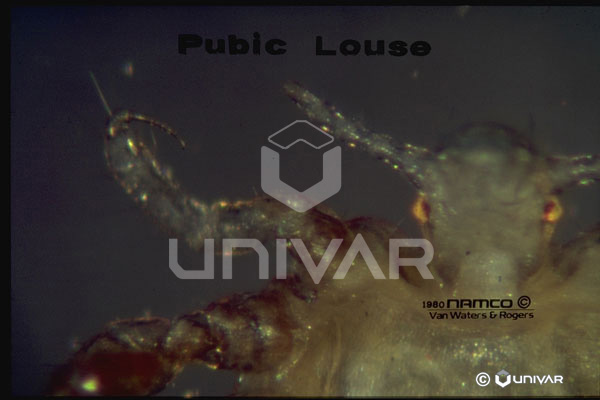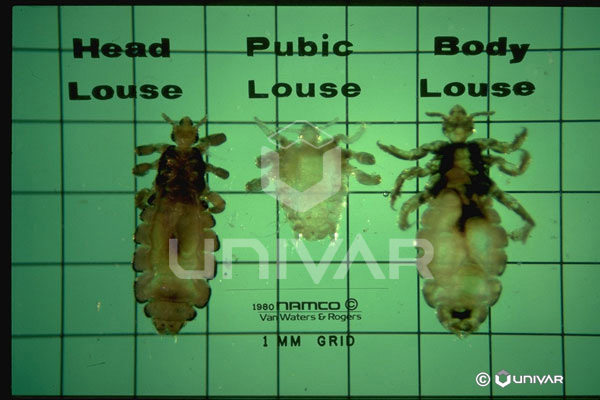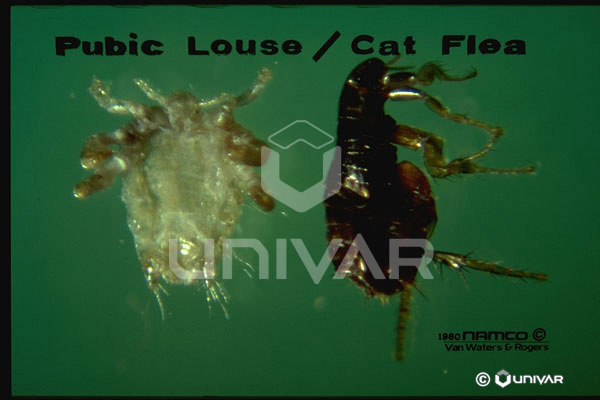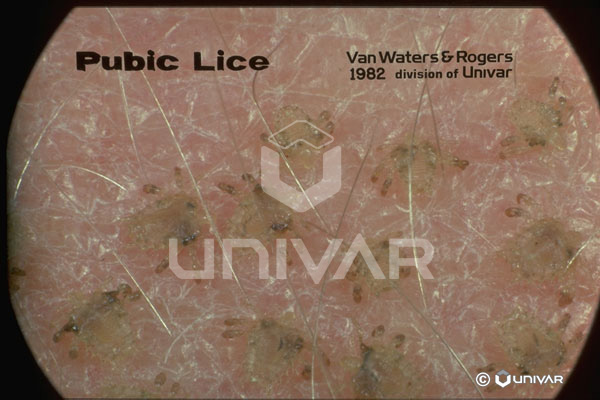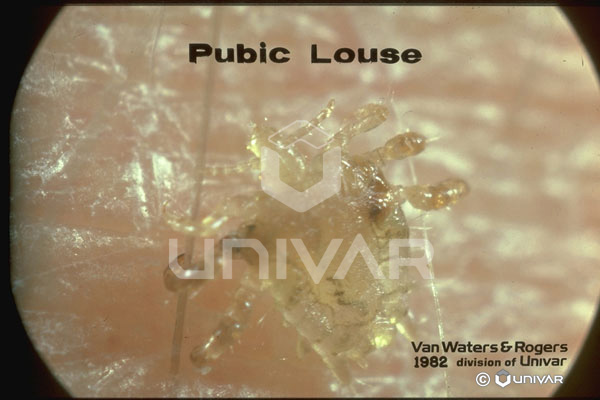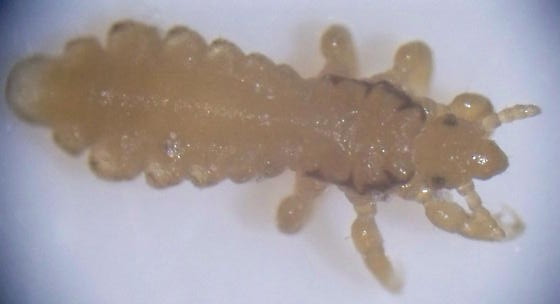
HEAD LICE
Common Name: Lice – Head louse
Latin Name: Pediculus capitus
Common Family Name: Sucking lice
Latin Family Name: Anoplura
Other Names: Nits (the eggs)
Origin: Not mentioned in the literature, but this human parasite is found worldwide and has traveled with humans throughout our history. Head lice have been found in prehistoric mummies.
Biology: Head lice are extremely similar to the related body louse, but differ in their habits. They generally restrict themselves to the hair on the head and their eggs are laid attached to the hairs. Head lice are not known to vector any diseases and they do little physical harm, but may cause sensitivity of the scalp and are socially embarrassing. Female lice lay about 100 eggs over several weeks, and growth from egg to adult is less than 3 weeks. Lice cannot jump or fly, and they are transmitted from person to person only by physical contact or sharing of clothing.
Identification: Head and body lice cannot be distinguished by their appearance alone, but by the body area they infest and the presence of eggs on hair or clothing. Head louse eggs are tiny, white, and glued to a hair by a cement sheath around the hair. The lice are only 2 to 3 mm long and are dirty-white to grayish in color. They have small heads and large, oval abdomens. Their 6 legs are long and tipped with sharp spine-like claws.
Characteristics Important in Control: Control of head lice is not an area a pest control technician needs to be involved in. It is a physician’s role by prescribing the use of pesticidal shampoos, and the PCO should strongly resist the demand to apply a pesticide to the premises. The lice die within a day or two off the human host, and will not be found wandering on carpets or furnishings.
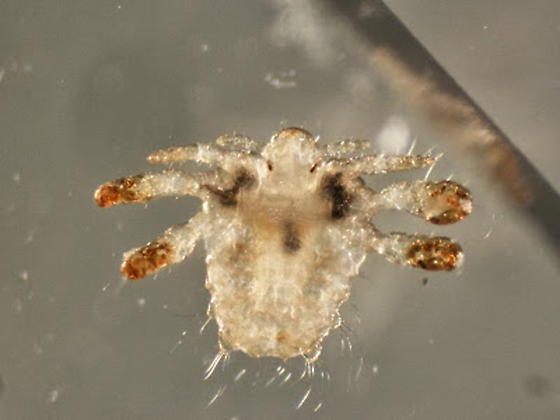
Crab Lice
Common Name: Lice – Crab louse
Latin Name: Phthirus pubis
Common Family Name: Sucking lice
Latin Family Name: Anoplura
Other Names: Crabs
Origin: CrabThese lice have been associated with humans for many centuries, and occur throughout the world.
Biology: Crab lice are strictly a human parasite, and they are found most often in the pubic hair area, although on a person with a heavy infestation they also may be found on hairs on the torso or even the eyebrows. The lice are exchanged primarily by close personal contact, although there is evidence that it also is possible by sharing of towels or bedding or possibly even contact with hairs on which the eggs may be present. A female can lay up to 50 eggs, attached to a hair, and they hatch in about 1 week. Growth to the adult stage takes just over one month. If they are removed from the human host the lice die in less than 2 days, usually in only about 12 hours. Crab lice are not associated with the spread of any diseases.
Identification: Crab lice are very small and light colored, making it difficult to see them against a light surface. They have a very distinct “crab” shape, with a compact, oval thorax and abdomen and prominent head. Their 6 legs are large and distinct, and the two hind pairs of legs are tipped with very large, claw-like hooks.
Characteristics Important in Control: Control of crab lice is not an area a pest control technician needs to be involved in. It is a physician’s role by prescribing the use of pesticidal shampoos, and the PCO should strongly resist the demand to apply a pesticide to the premises. The lice die within a day or two off the human host, and will not be found wandering on carpets or furnishings.
